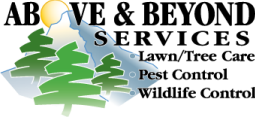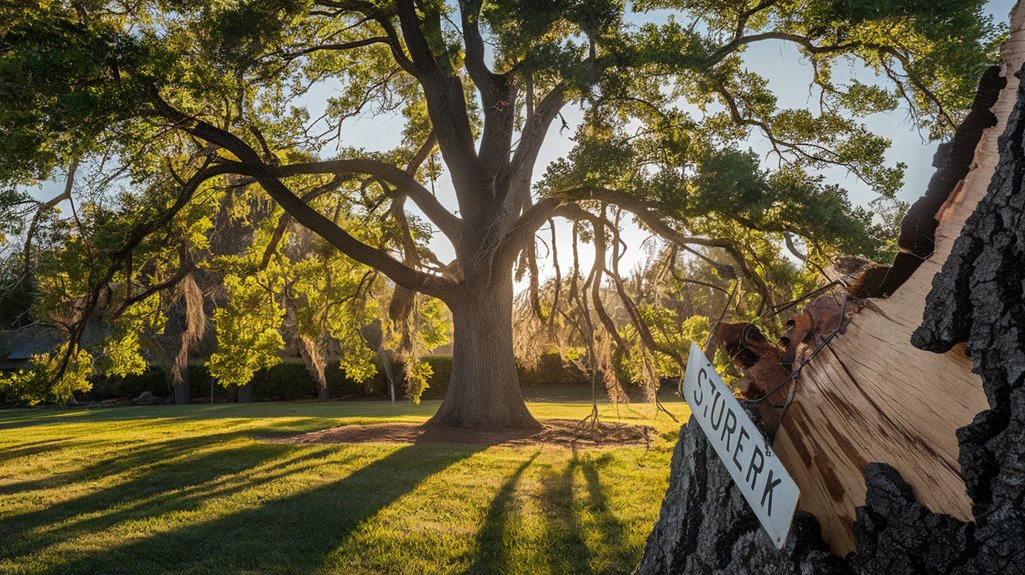When it comes to tree maintenance, you can’t afford to ignore certain signs. Dead or dying branches, overcrowding, and signs of disease can all threaten the health of your trees and your property. Plus, if a tree leans or grows too close to power lines, you could face serious safety risks. Understanding these signs is crucial, so don’t wait until it’s too late to take action. What might you be overlooking?
Dead or Dying Branches
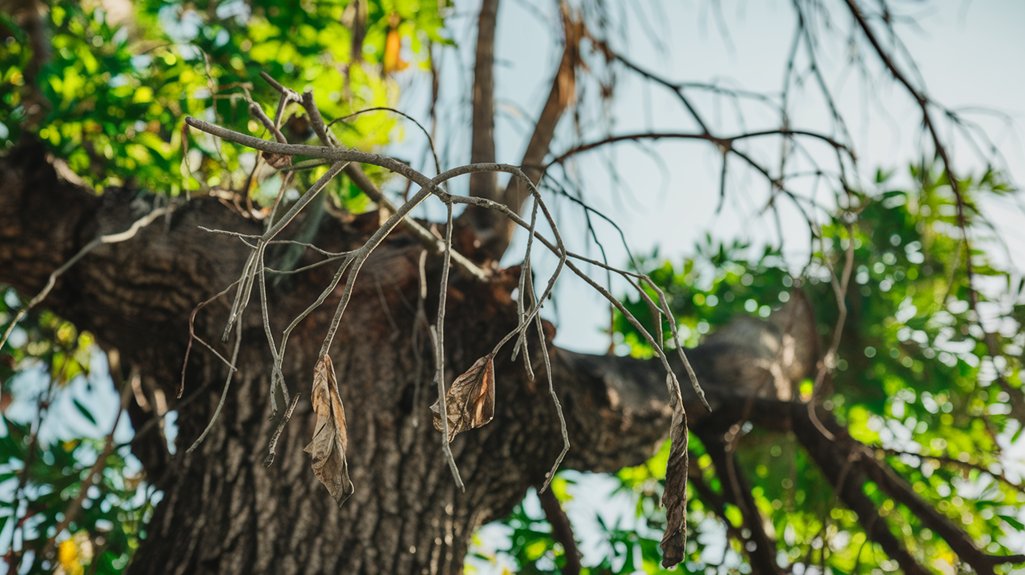
When you notice dead or dying branches on a tree, it’s crucial to act promptly, as they can pose a risk to the tree’s overall health and safety. Ignoring these branches can lead to further decline in branch health, making the tree more susceptible to pests and diseases.
You should regularly inspect your trees, especially after storms, to catch any potential hazards. Removing dead branches not only improves the appearance of your tree but also enhances its vitality. It helps redirect energy to healthier parts, promoting growth and stability.
Tree Trimming Signs demand swift response. Learn tree care from Colorado State University Extension.
Overcrowding or Poor Growth
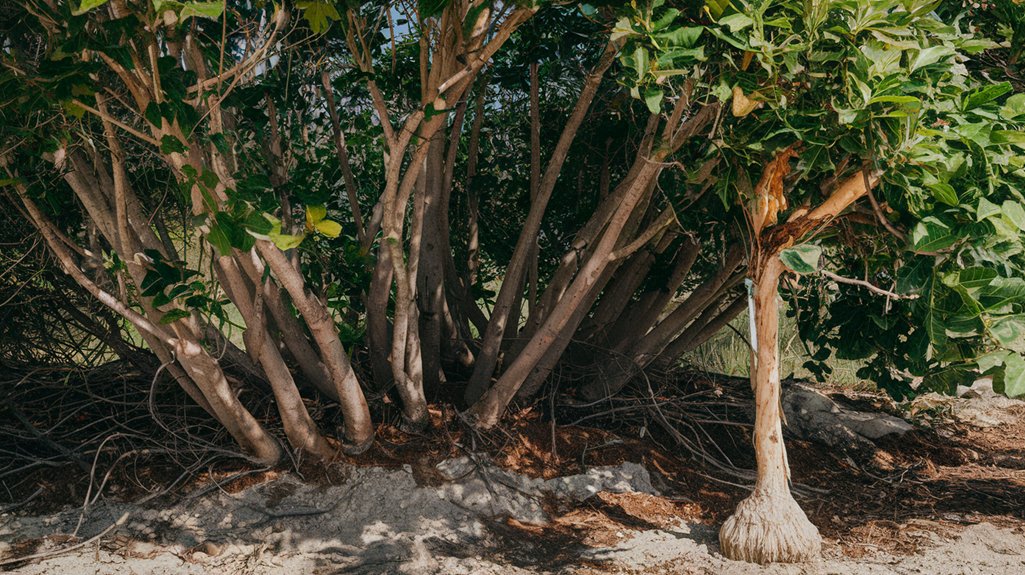
After addressing dead or dying branches, it’s important to consider the overall health of your tree, particularly if it’s experiencing overcrowding or poor growth.
An overcrowded canopy can lead to stunted growth, as trees compete for sunlight and nutrients. Here are some signs to watch for:
- Leaves are smaller or fewer than usual
- Branches are crossing or rubbing against each other
- Limited airflow through the canopy
- Signs of stress, like yellowing leaves
If you notice these issues, it might be time to prune or even remove some branches or trees.
Taking action now can prevent further complications and ensure your tree thrives in the long run.
Don’t wait; a healthy tree enhances your landscape and property value!
Signs of Disease or Infestation
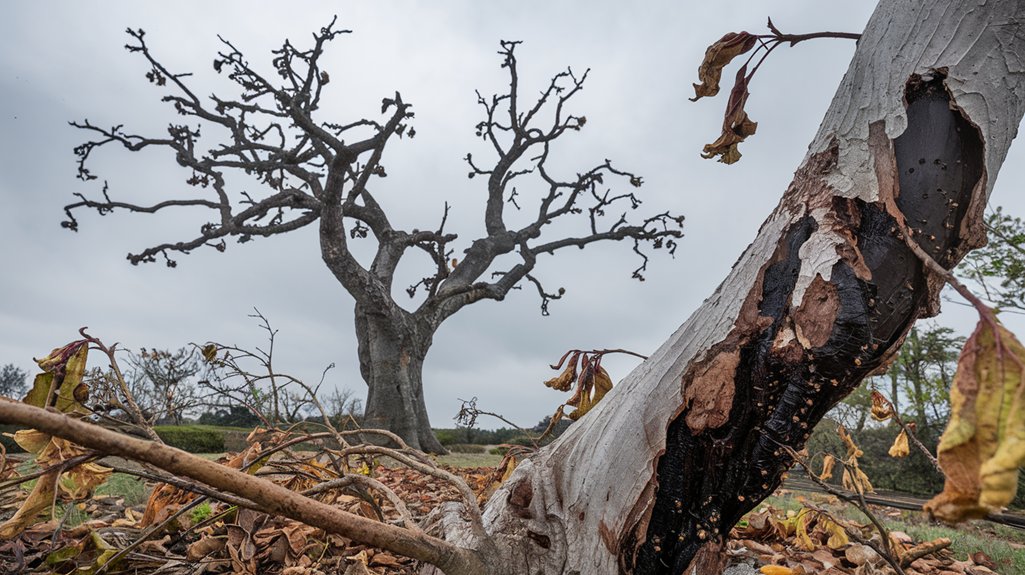
Recognizing the signs of disease or infestation is crucial for maintaining the health of your tree. Look out for disease symptoms like discolored leaves, wilting, or unusual growths. These indicators often signal that your tree isn’t thriving.
Additionally, inspect for pest damage; holes in the bark, frass (insect droppings), or visible insects can mean trouble. If you notice a sudden decline in your tree’s vitality or frequent pest activity, it’s time to act.
Ignoring these signs can lead to irreversible damage or even death of the tree. Regular monitoring and early intervention can save your tree and prevent further issues in your yard.
Don’t wait until it’s too late—address these concerns promptly!
Proximity to Structures or Power Lines
Tree health isn’t just about disease and pests; its location is equally important. If your tree is too close to structures or power lines, it poses serious risks.
You should consider trimming or removing it for these reasons:
- Tree safety: Overgrown branches can fall and cause injury.
- Property damage: A tree can damage your home, roof, or fences during storms.
- Power outages: Trees near power lines can lead to outages or fire hazards.
- Insurance issues: Neglecting tree maintenance may affect your insurance coverage.
Don’t wait for a storm or accident to act.
Regularly assess your trees’ proximity to structures and power lines to ensure your property remains safe and secure.
Uneven or Leaning Trunk
When a tree’s trunk leans unevenly, it can signal trouble that shouldn’t be ignored. This tilt often indicates compromised trunk stability, which could lead to a dangerous situation.
A leaning trunk may result from root damage, disease, or environmental stress, all of which can jeopardize the tree’s health. If you notice your tree leaning more than usual, it’s crucial to assess the situation promptly.
Ignoring this sign can increase the risk of the tree falling or causing damage during storms. Consulting an arborist can provide insight into whether the tree needs trimming or removal.
Taking action sooner rather than later can protect your property and ensure the safety of those around you. Don’t wait until it’s too late!
Frequently Asked Questions
How Often Should Trees Be Inspected for Health?
You should inspect your trees for health at least once a year. Regular inspection frequency helps catch issues early, ensuring your trees thrive and remain safe. Don’t overlook this vital aspect of tree care!
Can I Trim a Tree Myself or Hire a Professional?
You can tackle DIY trimming if you’re experienced and safety-conscious, but hiring professional services ensures proper techniques and reduces risks. It’s often best to leave significant work to experts for the tree’s health and safety.
What Are the Costs Associated With Tree Removal?
Tree removal costs vary based on several factors, like tree size, location, and accessibility. You’ll also need to consider disposal fees and any additional services, like stump grinding, which can increase your overall expenses.
Are There Seasonal Considerations for Tree Trimming?
Yes, there are seasonal considerations for tree trimming. You’ll want to trim during winter dormancy to minimize stress, while spring growth is ideal for shaping. Timing helps promote healthy growth and prevents damage to your trees.
What Permits Are Needed for Tree Removal in My Area?
To remove a tree, you’ll need to check local regulations regarding permits. Start the permit process early, as requirements can vary significantly based on your location, tree size, and proximity to structures or utilities.
In conclusion, keeping an eye on your trees is crucial for their health and your safety. If you notice dead branches, overcrowding, signs of disease, or if a tree leans dangerously close to structures or power lines, don’t wait to act. Addressing these issues promptly can prevent bigger problems down the line and ensure your property remains safe and vibrant. Remember, a healthy tree not only looks good but also protects your home and enhances your landscape.
Contact Us
Tree Trimming Signs need immediate action. Above & Beyond Services provides expert tree care in Denver. Call (720) 806-6378 or visit Above & Beyond Services for free quotes on tree trimming, pest control, and more.
Key Takeaways
- Dead or dying branches can compromise tree health and safety, requiring immediate removal to prevent further decline and pest susceptibility.
- Overcrowded canopies with stunted growth and limited airflow indicate the need for pruning to promote healthier growth and vitality.
- Signs of disease or infestation, like discolored leaves or pest damage, necessitate prompt action to prevent irreversible damage to the tree.
- Trees too close to structures or power lines pose safety risks and potential property damage, making regular assessments essential for maintenance.
- An uneven or leaning trunk suggests instability and danger, calling for immediate evaluation to prevent potential accidents during storms.
